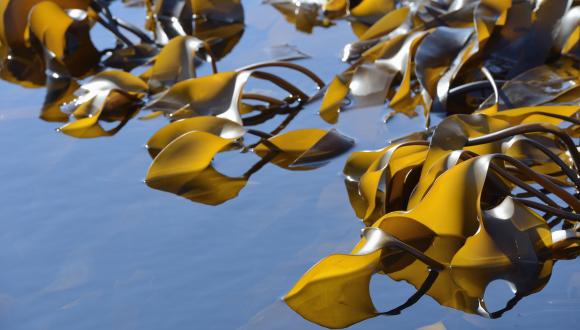Marine Protected Areas (MPAs)
Marine Protected Areas are recognised globally and used here in Scotland as one way to support our marine environment.
Marine Protected Areas (MPAs) protect a wide range of habitats, species, geology and undersea landforms in Scottish waters.
Scotland’s network of Marine Protected Areas (MPAs) now consists of 247 sites, with 233 for conservation purposes, providing protection to 37% of our seas. This means Scotland is providing a significant contribution to the Global Ocean Alliance ambition and the expected Convention on Biodiversity target of reaching 30% global ocean protection by 2030 – often known as 30by30
The development of the MPA network has been progressed between Marine Scotland, Joint Nature Conservation Committee (JNCC), Natural England, Historic Environment Scotland, Scottish Environment Protection Agency (SEPA) and NatureScot, working with a wide range of marine stakeholders. We provide guidance and technical advice to Marine Scotland and others on MPAs as part of our role.
Questions about MPA data, boundaries and management? Please discover more about individual sites through our SiteLink pages.
Find out more by reading information about the Scottish MPA network. Explore the background to the Nature Conservation MPA selections and the marine SPA selections. Details of our role and the advice we provide are on the MPA advice page and you can learn about our Survey and Monitoring work.
Update on MPAs
-
Enhanced protection - A public consultation on a draft policy and approach on selecting Highly Protected Marine Areas (HPMAs) was launched by Scottish Ministers in December 2022, and ran until 17 April 2023. The Scottish Government's full response to the consultation and the analysis of consultation responses have now been published. The Cabinet Secretary has announced that more time is needed to develop a whole community approach and new pathway for enhanced protection.
- On 12 December 2022 Ministers announced their intention to permanently designate the Red Rocks and Longay MPA, with Orders coming into force on 9 February 2023. The Consultation Report analysis, Government response to the public consultation, and Business and Regulatory Impact Assessment are now published on Marine Scotland webpages.
- On 1 February 2022 Scottish Ministers announced the public consultation on permanent designation of the Red Rocks and Longay MPA. We provided formal advice on permanent designation of the site to Marine Scotland in December 2021. Find out further details about the site and our advice.
The Red Rocks and Longay Urgent MPA for flapper skate was originally announced on 10 March 2021 by Scottish Ministers and interim measures for protection came into force on 17th March 2021 through an urgent Marine Conservation Order. Further survey work was carried out between July and September 2021, to support permanent protection, and a significant number of flapper skate eggs were found to the north and north west of the original boundary on similar egg-laying habitat. On 9 December 2021 Scottish Ministers announced their decision to urgently extend the area of protection and a new Marine Conservation Order came into force on 16 December 2021.
Flapper skate are critically endangered and the citizen scientists’ initial discovery of egg-laying habitat in 2019, with dense numbers of eggs in the Inner Sound of Skye, is a first for this species. This site will make a significant contribution to the conservation of our largest skate species.
- On the 3rd December 2020, Scottish Ministers announced the designation of four further Nature Conservation Marine Protected Areas (NCMPA) and twelve Special Protection Areas (SPA). These new designations include protection of important areas for seabirds, waders, divers and seaducks, basking shark, Risso's dolphin and minke whale alongside other features:
NCMPAs: North East Lewis, Shiant East Bank, Sea of the Hebrides, Southern Trench.
SPAs: Solway Firth, Outer Firth of Forth and St Andrews Bay Complex, Seas off Foula, Seas off St Kilda, Moray Firth, Ythan Estuary, Sands of Forvie and Meikle Loch, Bluemull and Colgrave Sounds, Coll and Tiree, East Mainland Coast Shetland, Sound of Gigha, West Coast of the Outer Hebrides, Rum.
Please visit Marine Scotland's webpage to view the Consultation Analysis Report and Post SEA Post Adoption Statement for these four new NC MPA designations. Read the new marine SPA designations Consultation Report and final advice to Scottish Government. Additional relevant documents can be found on the Marine Scotland consultation hub and on the closed consultation page.
- On 25 September 2020 Scottish Ministers announced the designation of the West of Scotland MPA in offshore waters and it will safeguard deep sea sharks, cold-water corals, coral gardens and a diversity of other fauna. This is the largest MPA in UK waters and you can explore the site by watching this JNCC video.
Find out more about the hidden habitats and species of the West of Scotland MPA. Our thanks to Heriott Watt University, NERC, With Plymouth University, University of Oxford, Deep Links, British Geological Survey, Cefas, Marine Scotland Science and Marine Scotland.






